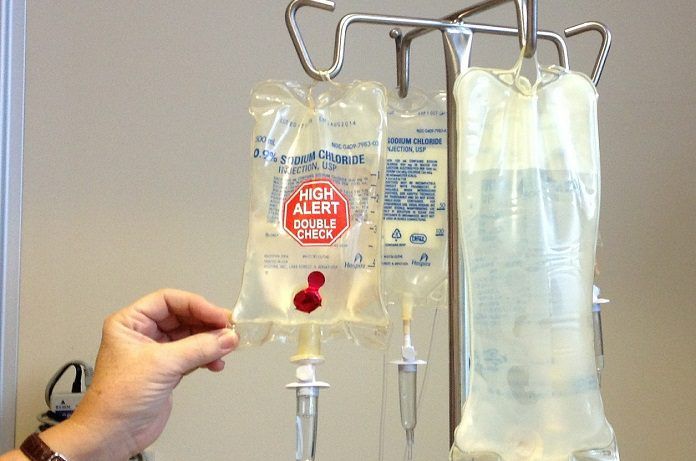A recent news article published in the British Medical Journal describes new research comparing the safety of balanced crystalloids to saline.
Many patients admitted to the hospital are routinely administered saline as a standard intravenous fluid. Two studies were performed in a hospital setting, comparing the outcomes of critical and non-critical patients, given either saline or balanced crystalloid solutions. Saline and balanced crystalloids are commonly used intravenous fluids that provide fluid supplementation to the body when there is a fluid or electrolyte imbalance. The two studies performed for were supported by the Vanderbilt Institute for Clinical and Translational Research and were recently described in a research news article published in the British Medical Journal.
These fluids are supplied within the emergency rooms, intensive care units, inpatients wards, and outpatient departments of a hospital. Saline contains a higher amount of the negative ion chloride than blood plasma. Balanced crystalloids contain a variety of different negative ions such as lactate and acetate which are not present in saline. The presence of negative ions in both of these crystalloids is to provide a physiological safety net in order to prevent any abnormal increase or decrease in the acidity of the blood.
Published in the New England Journal of Medicine, the first study included all patients in the emergency department at Vanderbilt University Medical Center in Nashville, USA. This study randomly allocated 13,347 non-critically ill adults, between 1 January 2016 and 30 April 2017, into two groups. All of these patients were given intravenous fluids; either regular saline or balanced crystalloids. The results of the first study showed that there was negligible difference in patient outcomes between the two conditions. The researchers noted that the number of deaths and kidney complications were lower with the balanced crystalloid group than the saline group.
A second study was done taking into account the critically ill patients in the intensive care unit, or ICU. In this study, 15,802 patients were recruited from five different ICU’s. The researchers measured mortality or the occurrence of kidney complications within 30 days. The results of the first experiment were replicated; balanced crystalloids were associated with a significantly lower rate of major adverse kidney events than saline.
As this research took place within only one hospital, further studies will be required to confirm if the same results can be generalized to other sites. If the switch from using saline to balanced crystalloids were to occur, such a change would need to be justified using evidence from large multisite trials. These studies, however, open to the door to an important investigation to determine the ideal intravenous fluid for patients.
Written by Dr. Apollina Sharma, MBBS, GradDip EXMD
Reference: Mayor, Susan. “Saline may raise risk of death and kidney complications more than balanced crystalloids.” The BMJ. (2018): k950.



